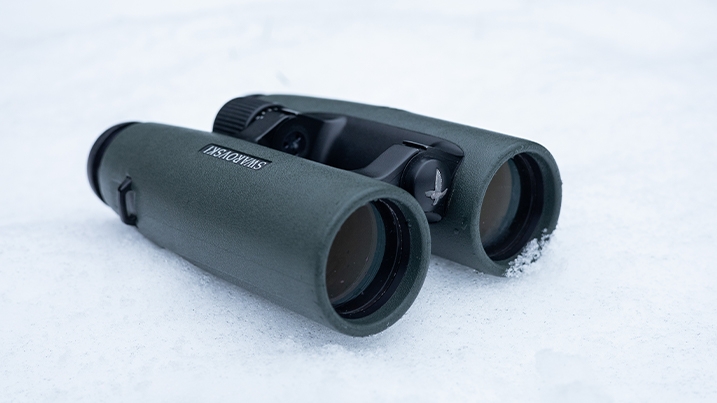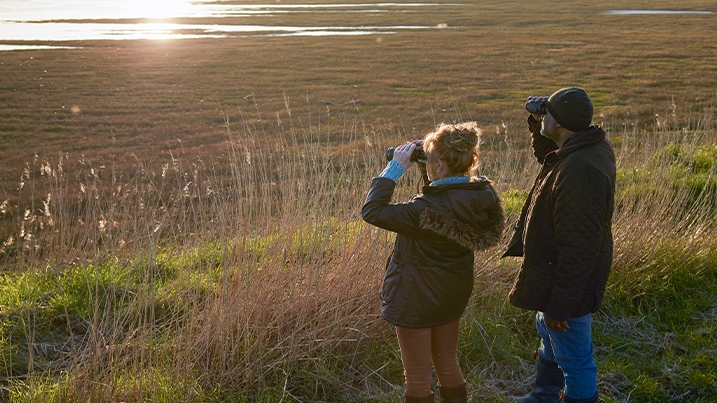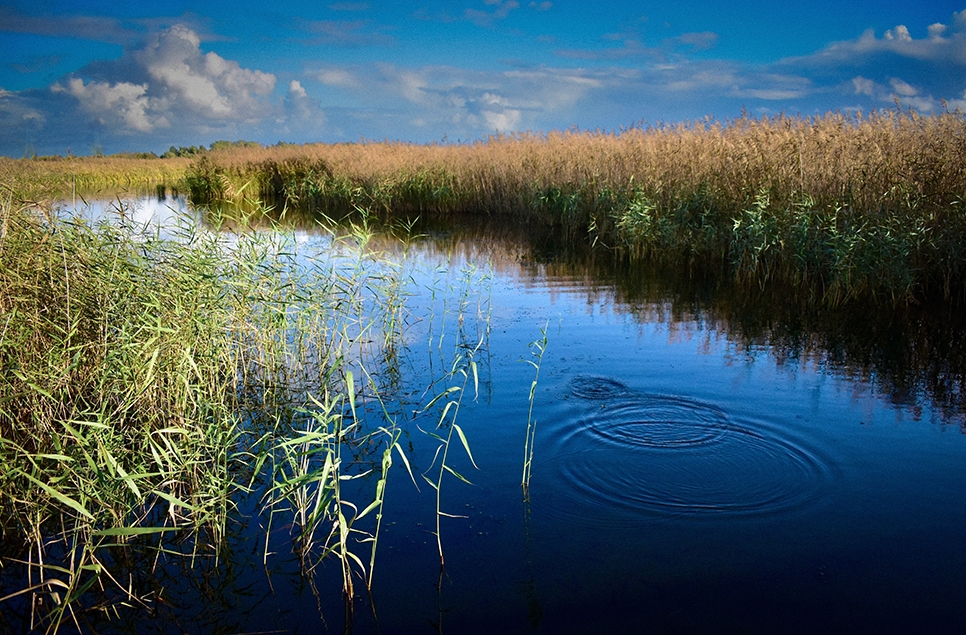Start a bird list this winter
As we welcome in the New Year, there's no better time to start thinking about doing a birding year list.
As we welcome in the New Year, there's no better time to start thinking about doing a birding year list. For some, this might be a familiar January activity.
But if you're asking “what is a bird list?” and you've never done one before, don't worry, we've got everything you need to get started. And with frosty sunrises and misty mornings, packed with flocks of your favourite birds, there's never a better time for you to break out of hibernation, pull on your woolly hat and gloves and spend some time in a winter wetland.
Why keep a list?
There are many types of bird lists that people keep, but the most common is the year list. Your year list will help to keep track of what bird species you have seen over the year. At the end of the year, you’ll enjoy knowing how many species you have seen and will be able to look back with a smile on time well spent. There is of course a competitive element; both with yourself to see more birds year on year, and with your birding friends to see more species than them in a year. However, where your year list comes into its own is the year-on-year build-up of your birding experience and knowledge. At the time, it might just be ticking a box when you first see the species, but we all only learn from what has happened in our past. If you keep a year list, you’ll know exactly when you heard the first whooper swans in-coming or your first swallow of the spring zipped low over your local lake. This means you’ll know when to expect them in future years and you’ll start to expect to see certain birds in certain habitats at certain times of the year.
Jenny, Digital Communications Manager at WWT, has enjoyed starting a list this year,
Keeping a bird list is a real journey! From struggling to keep up with the influx of ticks on 1st January, to hitting the jackpot with a ‘lifer’, then desperately seeking a resident bird that has eluded you all year in mid-December. It’s great fun. You don’t have to be an expert or travel far either – it’s nice to keep a list just for your garden, local park or nature reserve.
Why now?
Early in the year is a great time to start counting what you see; daylight hours are short, meaning the birds will be up and active, feeding at the same time as you are able to be out and about. And of course, the sun will set around the time you might be starting to think about getting back home. This means you’ll easily be able to spend your entire day with the birds; compare this to the 4am start you might need come the spring! Another factor enabling you to see birds is that the trees, hedges and reeds are mostly free of green vegetation, meaning that your view won’t be obscured.
And of course, the top reason to start your year list is that it’s the beginning of the calendar year; you’ve got 12 months of birding ahead of you and there’s no time quite like the present. You’ll thank yourself when you come to see more birds in spring and autumn; your list will be really strong by then. You’ll also have the calendar year’s second winter period to look forward to in order to see any winter species that you might miss this time around.
Andrew, Supporter Development Manager at WWT, explains why he starts his bird list in the New Year,
January is a great time to start a bird list. It’s the start of a new year and there are plenty of birds around, whether that be in the garden or on a reserve. It’s so easy as all you need is a waterproof notebook and a good pen. Personally I find bird lists enhance my enjoyment of watching birds. I enjoy a challenge and seeing the numbers rise as the year progresses is highly motivating.

Do I have the right kit?
All you need to start listing is a notebook and a pair of binoculars. Listing helps us to not forget what we have seen; make sure you note down the species, location and date at least. You can write down species as you see them, or get your hands on a birder’s logbook or use a digital spreadsheet.
Regarding optics, you’ll just need a good pair of binoculars. Binoculars are a great way to get close to wildlife; they work well for a busy wetland full of birdlife, allowing you to scan across the habitat and pick out the individuals you want to focus on. Take a look at our shop page for more.

Take in the entire experience
It’s also a good idea to write down fuller field notes, alongside your list. Something like this Birder's pocket logbook might come in handy. By recording more extensive descriptions of the birds and what the conditions were like when you saw them, when you then encounter similar conditions in the future, you’ll know what to expect. This can include date, temperature, daylight hours, precipitation, cloud cover, wind direction and wind speed. After all, many birds are migratory, and learning what you’re likely to see and when they’re meant to appear will help reduce misidentification.

Our selection of bird and ID books can help build up your knowledge. We particularly like the Collins Bird Guide.
Over the years, you’ll know if that bird is an early or a late arrival, which can be particularly interesting if you go birding in the same area and can predict what you might see. In recent times, many birders are looking back at their records and noticing that climate change and changing weather patterns are having an effect on when birds migrate and breed. For example, if we have a cold spring, it might take a long time for species such as sand martin to arrive and make it to their breeding grounds. And if we experience a warm autumn, it’s unlikely that large numbers of winter visitors such as bean geese will make it to our shores.
James, WWT’s previous Director of Conservation, gives us a personal take on his experience,
Looking back over the years, my lists show how dramatically things have changed for birds in the UK. Once upon a time, I would be lucky to see a Little Egret once a year on my travels yet the Turtle Dove was a common summer visitor in many places. Today, I now regularly see numerous Little, Great White and Cattle Egrets at local wetlands but I’m lucky if I see a Turtle Dove anywhere in the UK. Changing climate and land use have created so many changes during my lifetime, unfortunately most of them in the wrong direction.
A social affair
Note down who you are birding with. Whether with friends or family, it can often be beneficial to take trips out with others as you’re likely to pick more species up with additional eyes and ears searching. You’ll also be able to easily confer with one another if you encounter something you can’t identify yourself. In years to come, you’ll be thankful of the fond memories and the chance to get in touch with those you went birding with, just in case you have mis-remembered a sighting.

It’s a numbers game
There’s been around 630 bird species recorded in the UK (including northern Ireland) and this list is revised every year by the British Ornithologist’s Union (BOU). However, for birds that regularly occur - those that are resident, spend the winter, breed in or migrate through the country - the list stands at around 250. You’ll probably have been really committed if you see this many species in a year, but 200 is very respectable too. Set yourself a target that you think will be both achievable and enjoyable; for you, that might be nearer to 100. That might seem like a high number, but once you get into the habit of recording your sightings, you’ll be surprised how quickly the numbers rack up. You might not be able to see everything inside of a calendar year, but if you keep a list, you’ll know which ones you might want to target next year.
You might find that with visiting a few wetland sites in January, you could well get to 100 species. You’ve then got so much to look forward to as the year develops; spring migrants, summer breeders, autumn migrants and then right back round to winter.
How many lists?
In time, you might want to take your list further than recording what species you’ve seen that year. There might be somewhere that you go birding regularly, such as your nearest WWT Wetland Centre, so alongside your year list you might want to record the species that you’ve seen on your ‘patch’. Over many years, this could turn into quite an impressive haul with rarities pushing up the numbers. The number of lists you can keep is limitless; you might want to create a county list, a country life list, a world list…your list is what you make it!
Remember to enjoy yourself
Most important of all is to have fun and take pleasure in watching birds. You probably started birding because of something simple; a robin singing in your garden tree, a starling murmuration or geese flying in a v formation overhead. That awe and wonder should stay with you, no matter the number of species you see so if you feel it ebbing away, you might be taking the numbers too seriously!
Lists are a great way to record what you’ve seen to help your memory and target scarcer species, but don’t let it get in the way of your connection with nature and your wellbeing. A tick is just a tick, after all. And it should go without saying, but always ensure that you never disturb wildlife or people just to get a look at a bird.
And whilst it’s in our own interests to keep a list, it can also be good for birds, too. You are, after all, collecting data; vital information that can be used for conservation purposes. Once you’ve got back home, warm and dry, upload your sightings to BirdTrack or eBird and conservation organisations that monitor bird populations across the world, will benefit from your citizen science. Your list just got so much more rewarding!

So where to start?
WWT wetland centres are a great place to begin. There will be a large number of species present, using UK wetlands as relatively warm places away from ice and snow, in which to feed up and stay safe. They congregate en masse, often putting on a show-stopping spectacle, so you’ll be getting an unforgettable experience as well as being able to get a good start on list numbers.
Get kitted out at our online shop
Give back to wetlands and wildlife with every purchase.
Visit our shop
Support from Swarovski Optik helps us take care of our reserves to protect amazing wetland wildlife.



